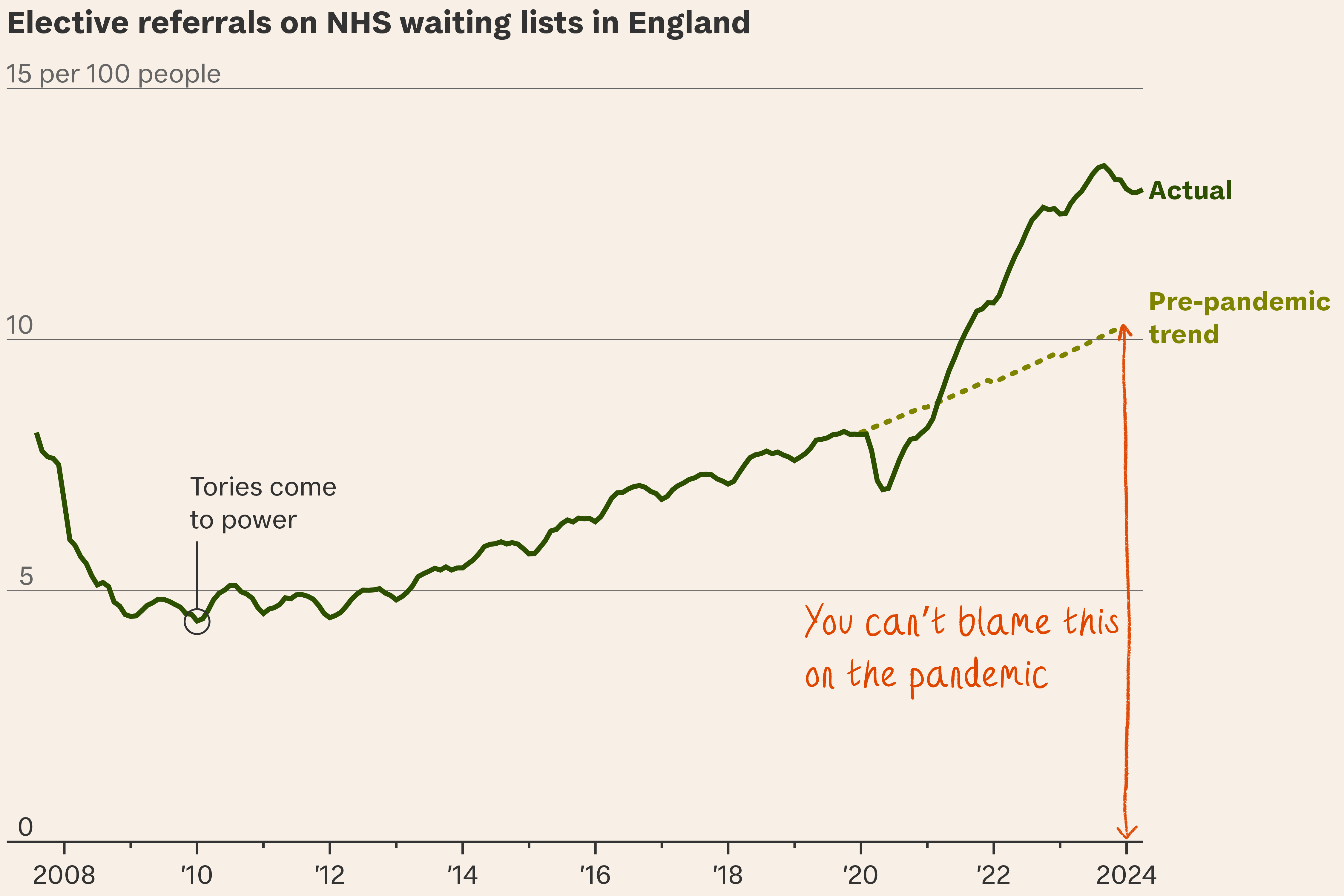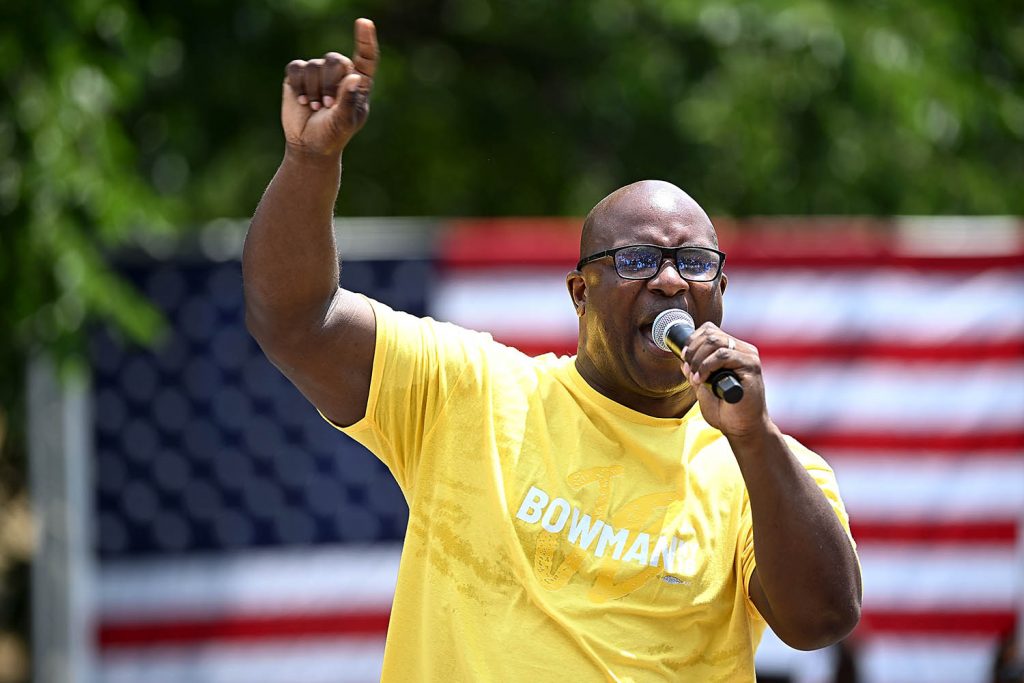
NHS leaders have warned of “major disruption” this weekend as junior doctors go on strike during the hottest week of the year. The five-day walkout will affect “almost all routine care”.
So what? This isn’t an isolated problem. The past 14 years have called into question the business model of the entire NHS as an ageing population faces more expensive treatments and a health system short on money and people. Successive Conservative governments have provided little in the way of answers.
Spot the difference
In 2010
- Around 2.6 million people were waiting for non urgent procedures when David Cameron became prime minister.
- In November, the percentage of people waiting more than four hours in A&E was 4.1 per cent.
- Overall satisfaction in the NHS was at 70 per cent, the highest since recording began in 1983.
In 2024
- The waiting list in April was 7.6 million (up from 7.5 million in March).
- In January, the percentage of people waiting more than four hours in A&E was 45.3 per cent.
- Overall satisfaction in the NHS is at its lowest level, at 24 per cent.
In 2016, the OECD highlighted cancer as an indicator of “average or disappointing performance” by the UK. In September 2023, 26 per cent of cancer patients waited longer than two weeks from an urgent GP referral to their first consultant appointment compared with 4 per cent in December 2009.
The past 14 years have seen failures in:
- management – then-health secretary Andrew Lansley’s restructuring reforms in 2010 to “liberate” the NHS were in reality a “huge strategic error”, according to one Downing Street official, adding £5 billion a year to health service costs and lengthening hospital waiting times instead of cutting them.
- funding – although NHS funding in cash terms is higher than ever, average real terms increases of 3.6 per cent a year are well below the long-term level needed, leaving hospitals crumbling and staff to work with outdated diagnostic tech.
- performance – chronic understaffing, real-terms pay cuts and poor work conditions have led to strike action which is estimated to have cost the NHS in England £3 billion in cancelled procedures and appointments.
- public health – even before Covid, Britain had a higher burden of preventable ill-health and premature mortality than its European neighbours and little is being done to reverse that.
In 2010, the NHS wasn’t a major political liability. It's now a top drawer issue for voters as they see friends, family or themselves struggle to get the care they need.
The response. On 2 June, Victoria Atkins, the health secretary, blamed rising waiting lists on the pandemic and increased demand, since people were “living longer” and “developing more conditions”.
Fact check 1: systemic weaknesses in the NHS (see above) emerged long before Covid. The service could have dealt better with the pandemic if it was more resilient in the first place.
“The trigger for the problems the NHS now faces may have been Covid, but the bullet had been loaded,” according to a 2023 report on NHS productivity.
Fact check 2: Although older people make up a higher proportion of the population than they used to, overall life expectancy is at the same level as in 2010 for women, and slightly below 2010 for men.
Rishi Sunak has also blamed the junior doctors’ strikes for his party’s lack of progress in reducing waiting lists. The strikes haven’t helped, but waiting lists are mainly a function of a much longer trend, according to the NHS Confederation.
Credit where it’s due. There has been some improvement in patient safety and accountability in the past decade, thanks largely to changes introduced by Jeremy Hunt. The 2023 workforce plan has also been welcomed despite long delays.
A private function. The incoming government has a mammoth but not impossible task. The private health care sector, which has benefited from failures elsewhere in the system, will likely be part of the solution.
What’s more… social care is also in crisis, with knock-on impacts on NHS services that will require additional public funds to mend.

















